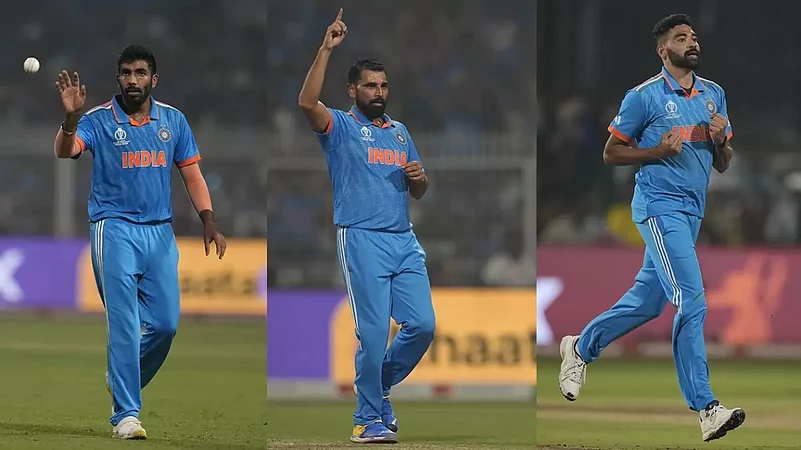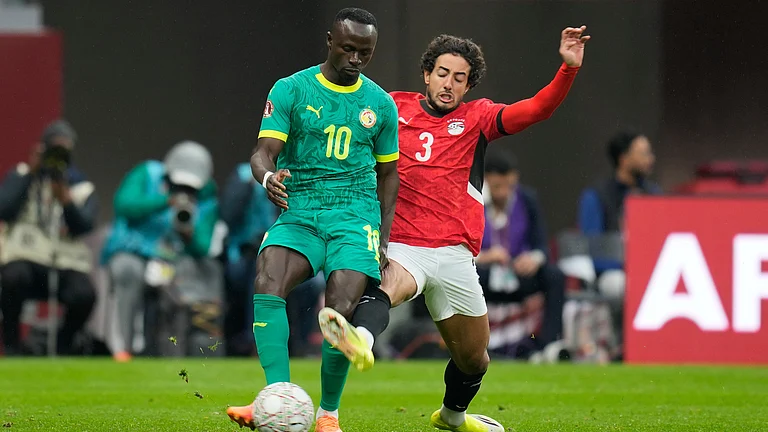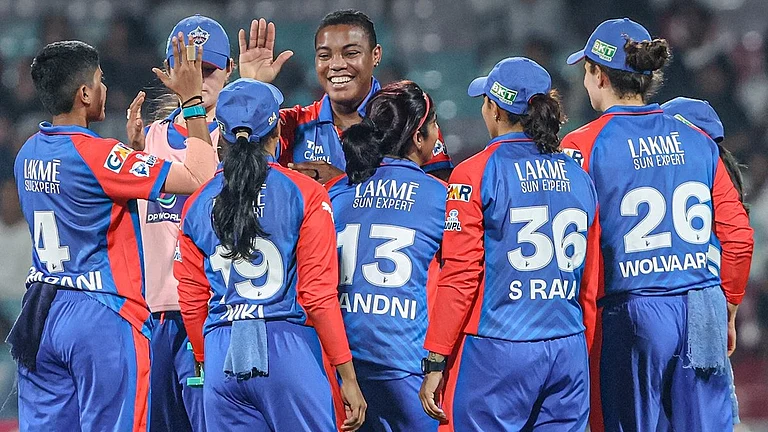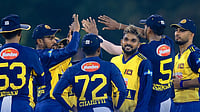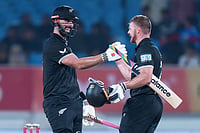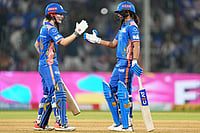It's a batter's game, innit? Modern-day limited-overs cricket is of, for and perhaps even by the batters. They are whom the crowds pay to watch. They are what send the broadcasters' ad rates soaring. The ICC Cricket World Cup 2023 is no different. Scan the promo posters of any match and count the number of bowlers in there. It is the Virat Kohlis, Rohit Sharmas and Shreyas Iyers who have hogged the airwaves, and for good reason, right? (IND vs AUS Final Scorecard | Streaming | Full Coverage)
Wrong. The Indian batting, anchored by Kohli and propelled by Sharma, Iyer and Co, has delivered the goods in the tournament so far. But it is not the main act of India's stunning performance in the showpiece event. The fast-bowling unit is.
Jasprit Bumrah, Mohammed Shami and Mohammed Siraj have set the stage on fire with their ferocious display. They have dismantled batting line-up after line-up, made a mockery of the white-ball cricket paradigm and enchanted everyone watching.
Bumrah, Shami and Siraj all bring different skills to the table. While Bumrah is the pace spearhead and has the ability to swing the ball both ways, Shami has arguably the best seam presentation in the world and relies on it to move the ball off the pitch, leaving batters with no time to adjust. Siraj, on the other hand, uses the scrambled seam to lethal effect.
All three have two things in common - they bowl fast and are always looking for wickets. Never before have India had three seamers, who routinely clock more than 140 kilometres per hour, bowl in tandem. Not only do these three do that, they do it while sustaining a nagging line and length and extracting extravagant movement off most surfaces.
It has been a surreal sight to watch them wield their magic under lights, when they talk to the ball and the ball talks back. It is one thing to get the ball to move in the air. But to do it at that pace and that late requires arcane mastery of your craft. These three clearly do.
The supreme confidence in their abilities means they are not afraid of pitching the ball right up, even in the powerplay. Their full lengths entice batters to drive, and then the ball deviously swerves away. It either takes the edge or beats you all ends up. You might feel you are lucky if you don't nick it. But you probably aren't.
As the barrage of swinging, seaming deliveries in the channel outside off stump continues. Ben Stokes witnessed it in that incredible 10-ball spell of Shami in Lucknow, where ball after ball bamboozled England's taslimanic all-rounder, before one finally shattered his stumps. It is hard to say whether Stokes was disappointed (for his dismissal) or relieved (for his ordeal finally ending).
The trio has hunted in a pack in the World Cup. Bumrah hasn't always picked up as many wickets as he probably deserves. But that is because he bowls too many unplayable deliveries that are too good to find the edge. Bumrah has the highest ratio of dot balls in the first 10 overs among all bowlers on display at the tournament. It is best to play him out and take your chance with the rest, batters are lulled into believing.
But that chance is fraught with danger. If Bumrah doesn't get you, Siraj or Shami surely will. The relentless nature of their spells means that you can always sense a wicket around the corner, and when it does arrive, it feels inevitable.
It's the stuff of your wildest dreams as a kid, and more. You had heard of the famed fearsome pace quartet of West Indies - Michael Holding, Joel Garner, Andy Roberts and Malcolm Marshall - from your elders. Soon, you saw Australia flex their fast-bowling muscle with a trio like Glenn Mcgrath, Brett Lee and Jason Gillespie at their disposal, harassing opposition batters at will. Later on, when you grew up a bit, you witnessed the Proteas employing Dale Steyn, Vernon Philander and Morne Morkel to intimidate top and middle-orders galore.
Will India ever have a fast-bowling battery like that, you wondered. You waited with bated breath for new speedsters on the scene. You got excited everytime a Javagal Srinath, Zaheer Khan or Ashish Nehra sparkled. But you never really got that battery. All of these bowlers did a fabulous job for the country and were part of some incredible campaigns, the foremost of which was the 2003 Cricket World Cup, where India went to the final before getting blown away by Australia. But a pace-bowling bunch that could torment opponents was still MIA.
Till Bumrah, Shami and Siraj arrived. And took the cricket world by storm. India suddenly had a fast-bowling triumvirate that began to lord over high-quality international sides and make their team a potent force in overseas Test tours. The same Indian fans who were used to underwhelming results in SENA (South Africa, England, New Zealand and Australia) countries were now glued to their screens, waiting to see what the speed merchants would do next.
But that was Test cricket. This, now is the ODI World Cup. Batting-friendly pitches, field restrictions, scoreboard pressure. The lines, lengths and mindsets of most teams' seam bowlers have changed rapidly in these altered conditions. But not so for Bumrah-Shami-Siraj. They have somehow transposed the menace and wicket-taking threat of red-ball cricket into the 50-over format, and with roaring success.
Opposition batters, otherwise considered aggressive and dangerous against the new ball, have crumbled in submission. Take South Africa, for instance. The rampaging Proteas line-up, including Quinton de Kock, Rassie van der Dussen and Aiden Markram - who have together made merry against other bowling attacks - were no match to the speed, swing and seam of the Indian trio. Resultantly, India skittled the second-best team in the tournament for a paltry total of 83 to record a humongous 243-run victory.
On Sunday, November 19, as India take on Australia for their title clash at the Narendra Modi Stadium in Ahmedabad, the hosts will once again rely on their threatening threesome to do what they do best - destroy convention and bruise batters' egos.






